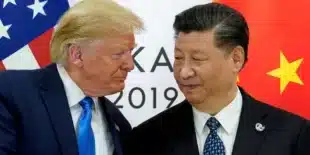The Japanese economy contracted at an annual rate of 1.8% in the first quarter of this year, a slight improvement from the initial estimate of a 2.0% contraction, according to revised government data released on Monday.
The revision was primarily due to private sector investments, which were reported at a decrease of 0.4%, up from the previously estimated 0.5% decline.
Seasonally adjusted real gross domestic product (GDP), which measures the value of a nation’s goods and services, continued to show negative growth as exports and consumption declined from the previous quarter.
On a quarterly basis, the economy fell by 0.5% during the January-March period, consistent with last month’s figures, as reported by the Cabinet Office.
The annual rate represents the hypothetical scenario if the quarterly rate were to continue for a full year.
Wage growth has remained sluggish, and import prices have risen due to a depreciation of the Japanese yen against the U.S. dollar. Currently, the dollar is trading at nearly 157 yen, compared to about 140 yen a year ago.
The weak yen has spurred a boom in tourism but has made imports more costly, a significant issue for a country that imports nearly all its energy. Additionally, weak consumer spending has further hampered economic growth, with private consumption accounting for half of Japan’s economic activity.
Another negative factor is the ongoing scandal involving improper vehicle model tests at several major automakers, including Toyota Motor Corp., which are critical to Japan’s industrial reputation. This has led to production halts for some models.
Government officials raided Honda Motor Co.’s Tokyo headquarters on Monday, and Japanese media reports indicate that Mazda Motor Corp. will be raided soon. Toyota and Suzuki Motor Corp. have already been subjected to raids.
Last week, Toyota Chairman Akio Toyoda apologized for the extensive fraudulent testing that included using inadequate or outdated data in collision tests, incorrect testing of airbag inflation, rear-seat damage assessments in crashes, and engine power tests. Although vehicle safety has not been compromised, the companies reportedly aimed to expedite the testing process.
Investors are also closely monitoring the Bank of Japan’s next moves, as the central bank’s monetary policy board meets later this week. Earlier this year, the central bank raised interest rates for the first time since 2007, moving them to a range of 0 to 0.1% from the previous -0.1%.
“The Japanese central bank’s stance will be closely watched, especially given the prevailing domestic currency weakness. Japanese manufacturers are facing the fastest rise in input costs,” S&P Global Market Intelligence noted in a report.
Unemployment remains relatively low in the world’s fourth-largest economy, at around 2.6%. However, Japan faces a significant labor shortage, with the birth rate hitting a record low last year and the number of marriages also declining.
These demographic trends could pose long-term challenges, as analysts worry about Japan’s weak per capita output and diminishing influence on the global stage, which could even lead to security risks.
The International Monetary Fund (IMF) projects that Japan’s GDP will slip to the fifth-largest in the world, behind the U.S., China, Germany, and India, next year.


